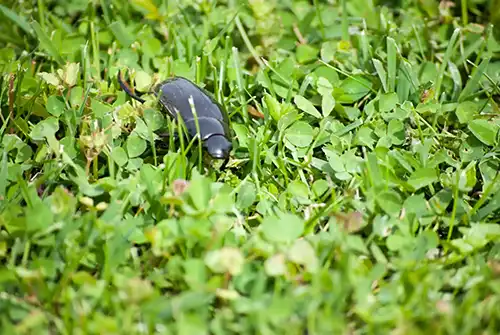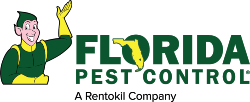How Can I Tell If I Have Pests in My Lawn?
Dealing with outdoor pests is a frequent problem for both residents and businesses in Florida. Though one or two unwanted critters on your property isn’t necessarily cause for concern, an outbreak can quickly ruin the long-term health of your lawn. To protect your lawn from harmful insects and other pests, keep an eye out for these signs of an infestation:
- Chewed or notched grass blades: Regularly inspect your grass blades for signs of pest damage, such as chewed or notched edges, patches turning yellow or brown, or irregular patterns of thinning or dying grass. Insects or grubs are particularly known for eating through vegetation, leading to this type of destruction.
- Pest activity: Watch for actual pests or signs of their activities. Look out for insects, larvae, or adult pests moving on the grass surface or concealed in the thatch or soil. You might also spot tunnels, webbing, or mounds, indicating the presence of pests that burrow underground.
- Changes to your lawn’s health: Pay attention to alterations in your lawn’s growth and appearance. If the grass starts to wilt, grows unevenly, or appears stressed without any apparent reason, it might signal a pest infestation.
- Sudden outbreak of weeds: Pests and weeds often go hand in hand. If you observe an uptick in weed growth or the sudden emergence of persistent new weeds, it could be a hint of an underlying pest issue.
- Animal digging or droppings: Animals like raccoons, skunks, or armadillos can dig up the lawn in search of insects or grubs. Look for signs of digging, upturned soil, or animal droppings that indicate their presence.

Need Lawn Care? We Can Help.
Click the button below to leave your information & we'll be in touch in an hour or less.
Pest Control Experts You Can Trust
Leave your information below and we’ll be in touch with your FREE quote!
*During normal business hours. After hours inquiries will be returned the next business day.
What to Do If You Have Pests in Your Lawn
If you discover pests in your landscape, it’s important to take quick action. Outdoor infestations are particularly difficult to control because you have less power over environmental factors that can encourage pest activity. To get rid of lawn pests, try using these tips:
- Identify the pest species: Different pests exhibit different behavior, and it’s important to identify what species you’re dealing with. Once you know what type of pest is invading your lawn, you’ll be able to create an effective treatment plan.
- Control excess moisture: Almost all insects and rodents in the Florida area are drawn to damp environments, which is why overwatered lawns are more susceptible to infestations. If your grass is squishy or growing fungus, try cutting back on your watering routine.
- Trim the grass and reduce debris: Pests prefer landscapes with plenty of hiding places. Cutting your grass a bit shorter – between 2 ½ and 3 inches – and raking away leaves or twigs can make your property less attractive to unwanted critters.
- Consult a professional: Managing an infestation can be a real challenge. If you’ve tried all of these steps and are still struggling with pests, consider working with an expert to eliminate the infestation as quickly as possible. They have the right tools and experience to protect your lawn long-term.
